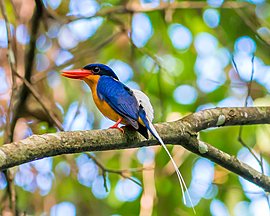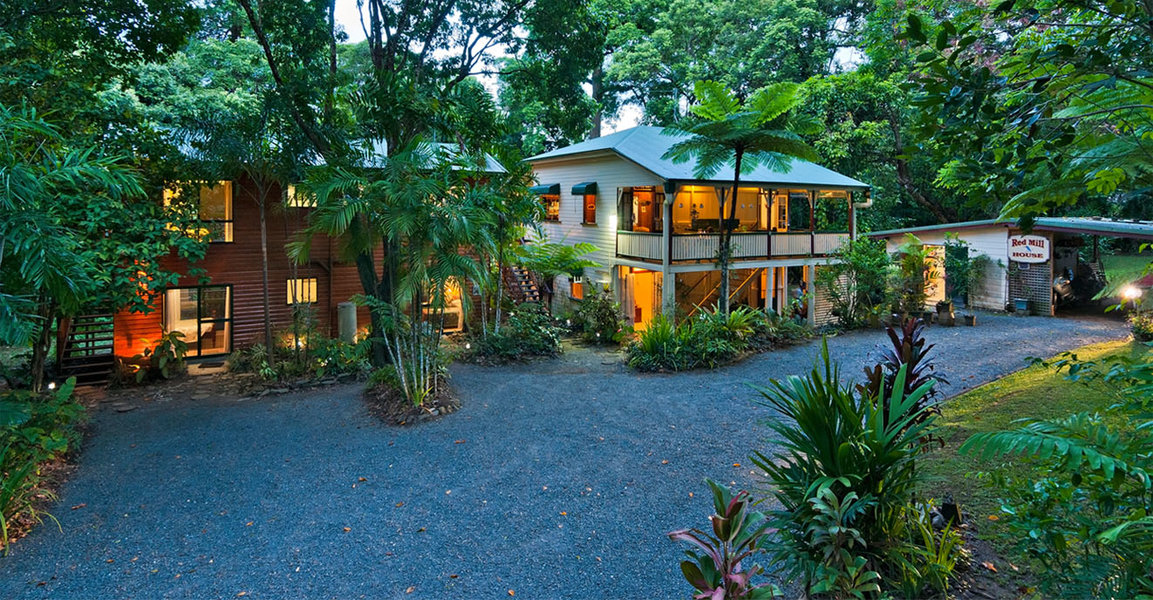
Photo: Taro Okauchi |
Buff-breasted Paradise-Kingfisher
Tanysiptera sylvia
Size - 30-35cm, including tail streamers. Forehead, crown and shoulders royal blue, lower rump and long central tail feather white, black band through eye and extending to nape and lower back, underparts rich apricot and bill, legs bright orange-red. Female often with bent and broken tail feathers during breeding season. Juvenile duller with short tail feathers and a black bill.
Call - tcherwill, tcherwill when advertising territory and a soft trill when near the nest.
A breeding migrant from New Guinea present from October-April. The birds all arrive at the same time, usually at night, and are ready to start breeding, begin to establish their own territory, choose a nest site and seek a mate straight away. Will often use the same termite mounds as previous years and start digging soon after arrival if conditions are good. Locally common in a restricted range, choosing lowland rain forest with open ground, scrubby mountain gullies, riverside vine scrub and well vegetated gardens from Cape York to Townsville.
Nest in active terrestrial termite mounds - always small, dark mounds exclusive to rainforest. The entrance is near ground level. They dig a new tunnel each year as termites fill in the previous year's hole. Eggs are white, with 3-4 laid. Both sexes incubate eggs and feed the young. The nest becomes more obvious at this time with excreta and insect debris piling up below the entrance to the nest (also smelly). The young fledge after 25 days. Goannas are major predators of the nest.
Feed on insects, spiders, small skinks and small frogs, hunting on the ground or in foliage.
The Buff-breasted Paradise Kingfisher is shy and often hard to see in the rainforest, despite the bright colours. It can found singly or in pairs. It is common to see the long white tail feathers flicking up and down while the bird is perched.
The adults return to New Guinea in March, with the young following a few weeks later.
The Buff-breasted Paradise-Kingfisher is very popular for birdwatchers to Far North Queensland and can be found in the Daintree area from October to April. Nesting mounds can be found on Stewart Creek Rd in Daintree, Jindalba Boardwalk and in the area of Julatten.
|

